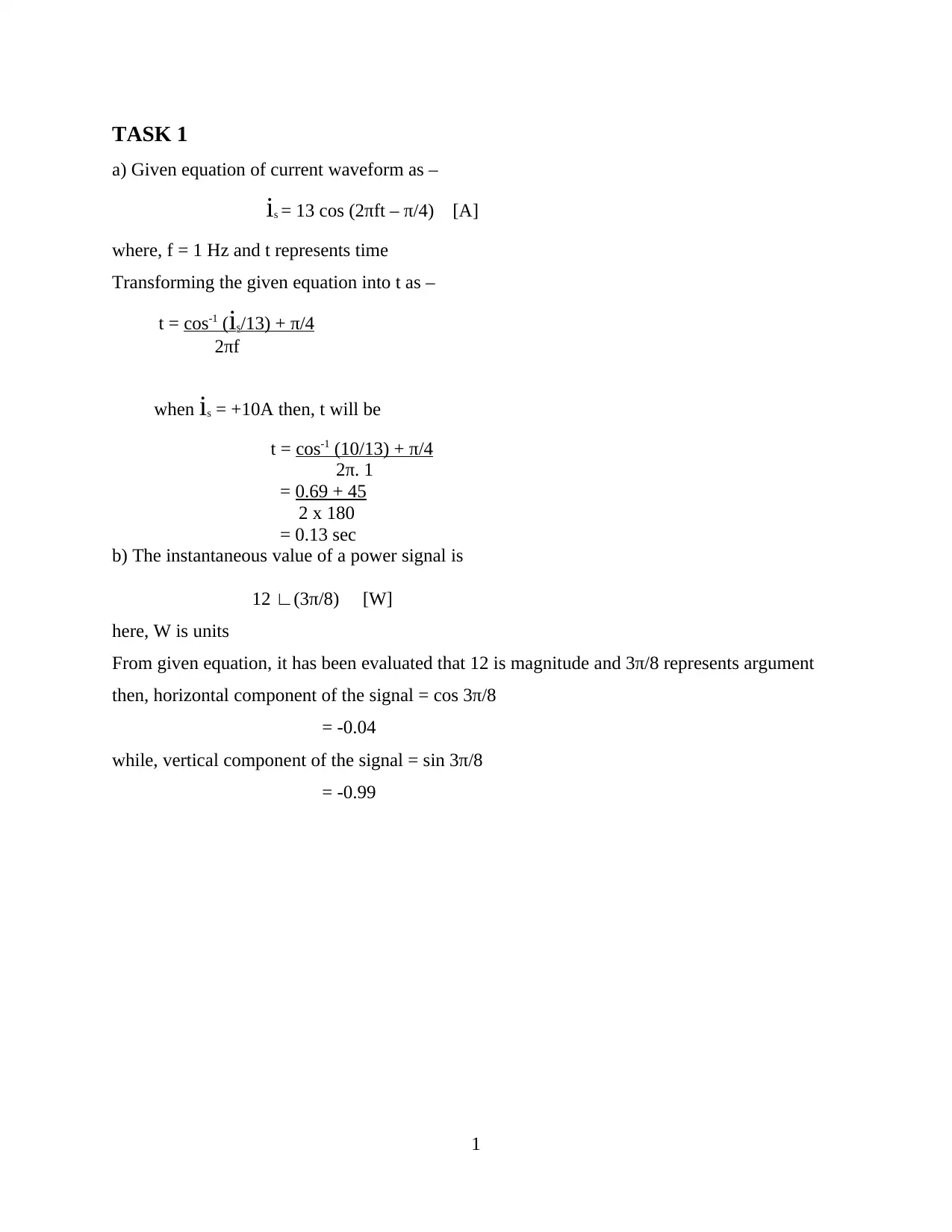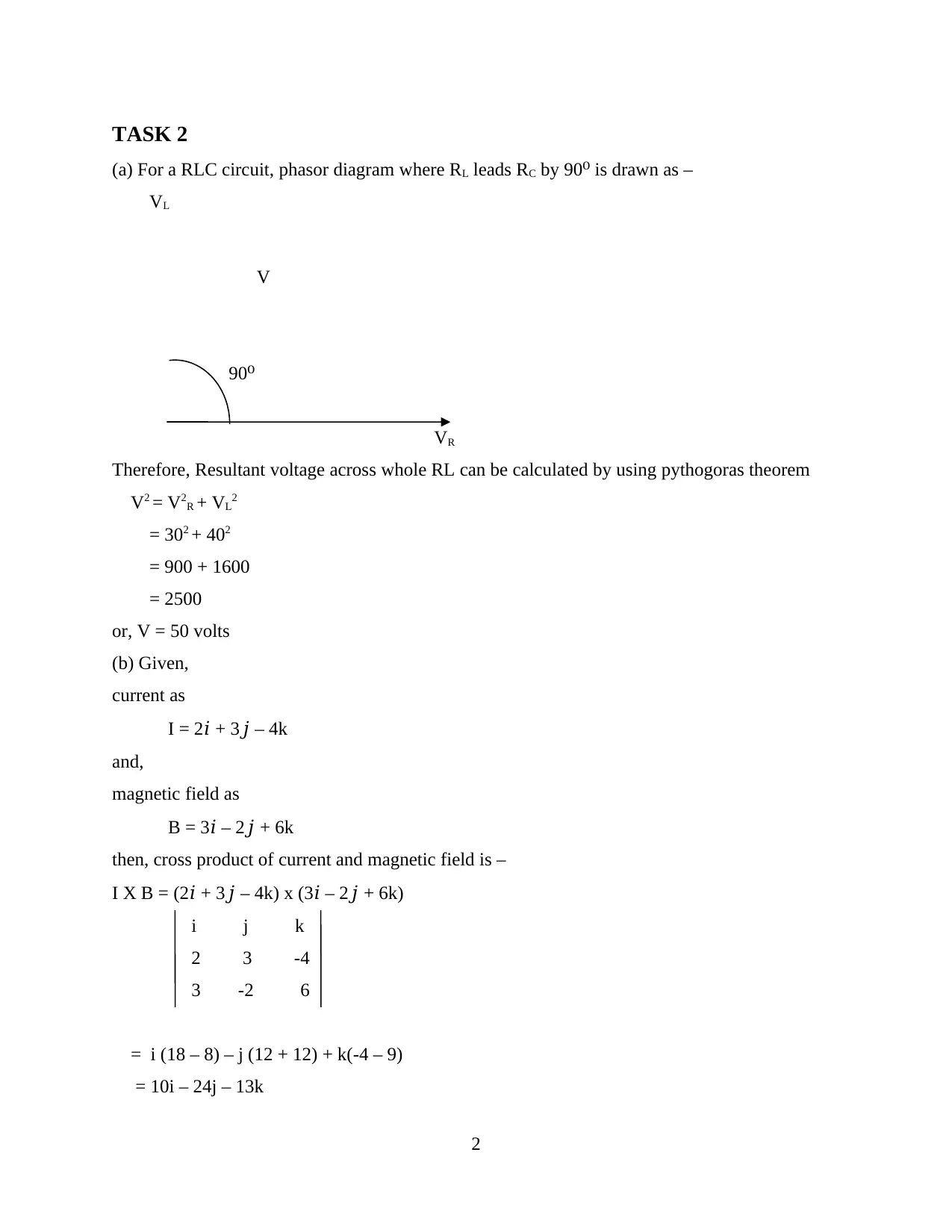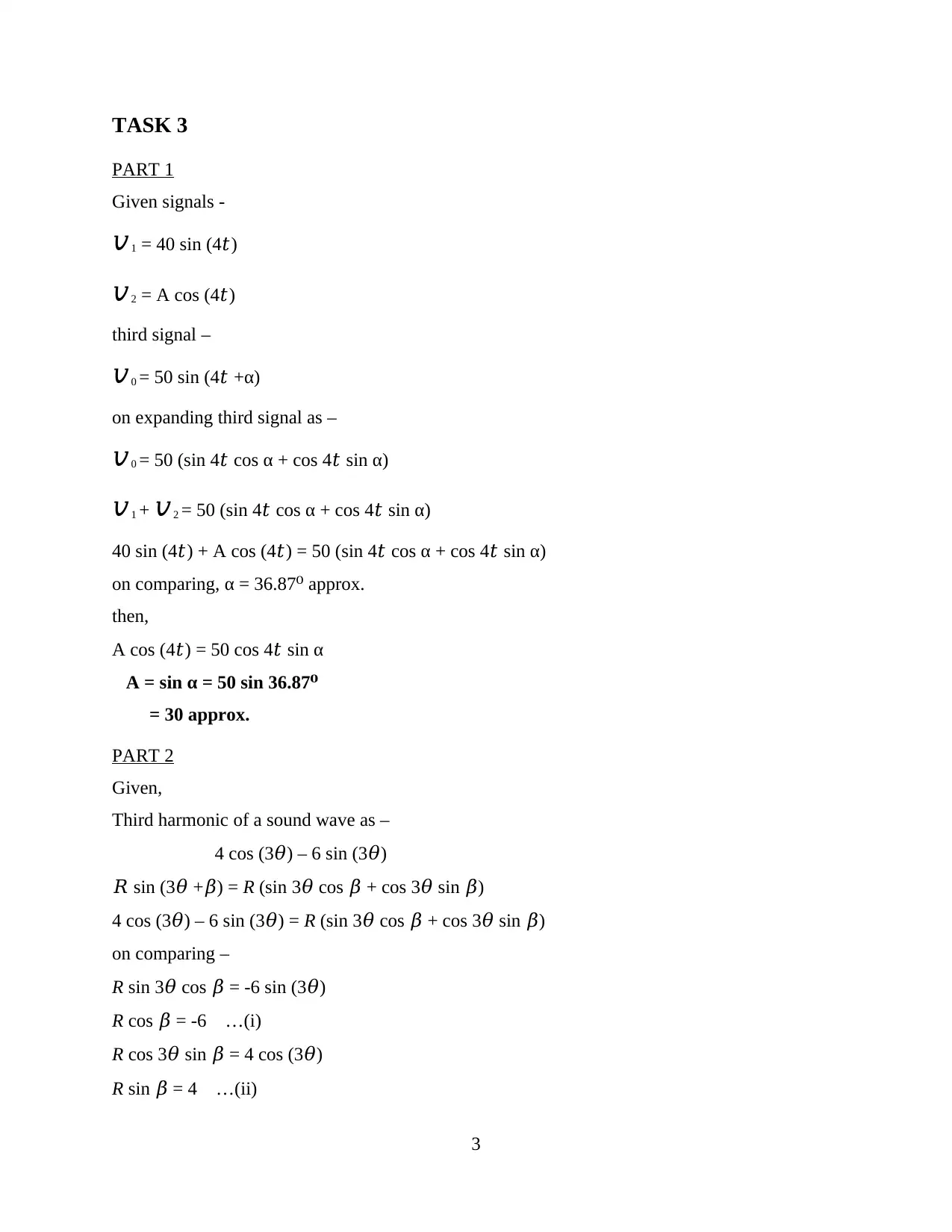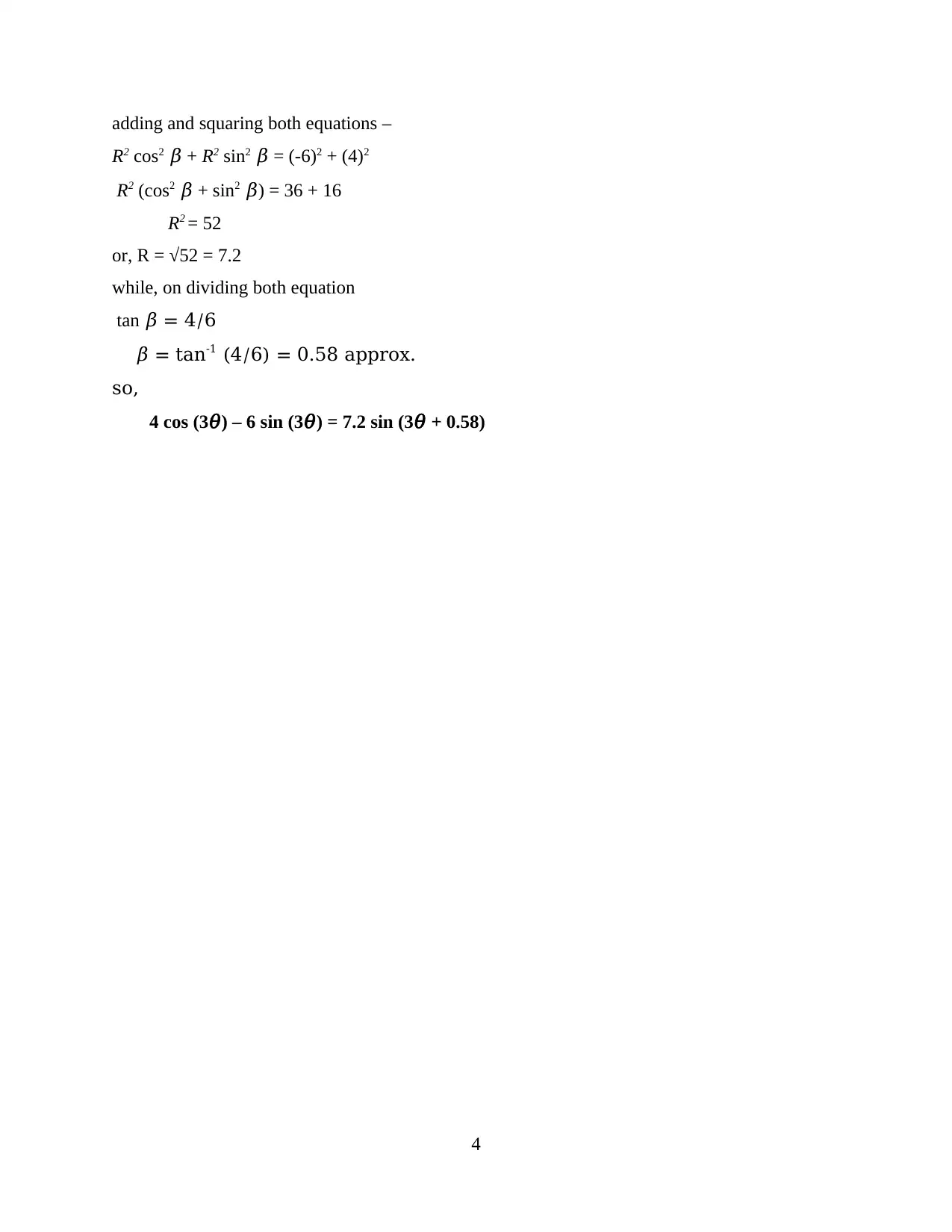Engineering Assignment: Analytical & Computational Methods Solutions
VerifiedAdded on 2023/01/09
|6
|654
|74
Homework Assignment
AI Summary
This document presents solutions to various tasks related to Analytical & Computational Methods, likely within an Electrical Engineering context. The solutions cover several key areas, including the analysis of current waveforms, calculating instantaneous values of power signals, and working with RLC circuits and phasor diagrams. Further tasks involve vector calculations, specifically the cross product of current and magnetic fields. The assignment also delves into signal processing, addressing the combination of sinusoidal signals and the analysis of harmonic components of sound waves. Detailed step-by-step solutions are provided for each task, making it a valuable resource for students studying electrical engineering and related fields. The solutions are contributed by a student and are available on Desklib, a platform offering AI-based study tools.
1 out of 6













![[object Object]](/_next/static/media/star-bottom.7253800d.svg)